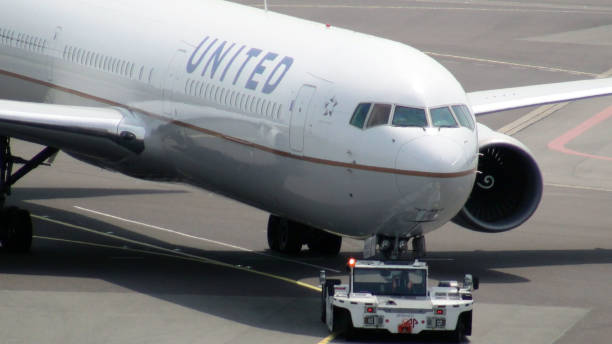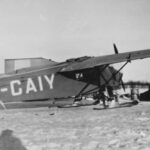Introduction to the Incident
On a seemingly ordinary day in October 2023, United Airlines Flight UA770 took to the skies. Passengers settled into their seats, ready for what they thought would be just another routine journey. However, excitement quickly turned to anxiety when an emergency diversion became necessary. The events that unfolded shocked those onboard and left many wondering about the safety of air travel.
As details emerged from this mid-air drama, passengers shared harrowing accounts while authorities scrambled to respond effectively. What really happened on United Airlines flight UA770 during that turbulent episode? Join us as we dive deep into this extraordinary incident and explore its implications for aviation safety moving forward.
Timeline of Events on Flight UA770
On March 15, 2023, United Airlines Flight UA770 departed from Denver International Airport. The plane was bound for San Francisco International Airport.
About an hour into the flight, passengers began to notice unusual sounds coming from the aircraft. Initially dismissed as routine noise, unease quickly spread among those onboard.
Shortly after that, the captain announced a need for an emergency diversion due to technical issues. Calm yet urgent instructions were given over the intercom.
The crew prepared everyone for landing while reassurances filled the cabin. Passengers braced themselves as they approached their unexpected destination: Salt Lake City International Airport.
Upon landing safely, emergency services awaited on the tarmac. Passengers exited with mixed feelings of relief and anxiety about what had just occurred.
Passengers’ Accounts and Reactions
As news of the emergency diversion spread among passengers, a mix of confusion and concern filled the cabin. Many recalled feeling an immediate shift in atmosphere as flight attendants communicated unexpected changes.
A few travelers later described their emotions as “nervous anticipation.” Others reported exchanging anxious glances, silently questioning what might be happening.
One passenger shared how they initially thought it was just a routine announcement about weather. However, when turbulence hit and the plane began to descend rapidly, fear set in.
Social media quickly buzzed with updates from those onboard. Passengers posted live reactions, capturing their disbelief and relief as they landed safely at a nearby airport.
The camaraderie formed during this unsettling experience surprised many; strangers became allies amid uncertainty. Shared stories afterward revealed moments of humor even in distress—like joking about wanting extra peanuts after such an eventful flight.
Response from United Airlines and Authorities
United Airlines promptly addressed the emergency diversion of Flight UA770, emphasizing passenger safety as their top priority. The airline quickly initiated communication with affected passengers and their families to provide updates.
Authorities, including the Federal Aviation Administration (FAA), were also involved in assessing the situation. They promised a thorough investigation into what led to this unexpected turn of events.
Passengers aboard received timely information from flight attendants about necessary procedures during the diversion. Many appreciated United’s swift efforts to ensure everyone remained calm throughout the incident.
As reports emerged, both United Airlines and aviation experts began discussing improvements in protocols for similar situations to enhance future responses. The collaboration between airlines and regulatory bodies was pivotal in managing this crisis effectively.
Possible Causes of the Emergency Diversion
Several factors can contribute to an emergency diversion during a flight, and United Airlines Flight UA770 was no exception.
One potential cause could be mechanical issues. Aircraft are complex machines, and even minor malfunctions can prompt pilots to act swiftly for safety.
Weather conditions also play a crucial role. Sudden turbulence or storms may force pilots to change course unexpectedly. Even experienced crews must prioritize passenger safety above all else.
Another possibility is medical emergencies involving passengers or crew members. Such incidents require immediate attention and often lead to diversions at the nearest airport.
Security threats cannot be overlooked. Any sign of danger onboard typically triggers rapid responses from airline staff and authorities.
Each of these elements highlights the unpredictable nature of air travel and the importance of readiness at every level in aviation operations.
Safety Procedures and Precautions on Airplanes
Airlines prioritize passenger safety through a series of rigorous procedures and precautions. Before each flight, aircraft undergo thorough inspections to ensure every component is functioning correctly. Crews conduct pre-flight checks, verifying everything from emergency equipment to communication systems.
In the cabin, safety demonstrations are crucial. Flight attendants explain how to use seatbelts, locate exits, and operate life vests. This information becomes vital during an emergency.
Additionally, strict protocols govern pilot training. They prepare for various scenarios through simulations that replicate potential emergencies. These exercises equip them with essential skills and decision-making abilities under pressure.
Aircraft also feature multiple redundancies in critical systems like navigation and hydraulics. This ensures that if one system fails, backups can take over seamlessly.
Passenger cooperation is equally important; following crew instructions enhances overall safety during flights. Each element contributes to a comprehensive approach that protects everyone on board regardless of circumstances.
Conclusion: Lessons Learned from Flight UA770
The incident involving United Airlines Flight UA770 serves as a poignant reminder of the complexities and unpredictability of air travel. Passengers and crew alike experienced a range of emotions during the emergency diversion, from fear to relief, highlighting how quickly situations can escalate.
This event sheds light on the importance of preparedness for both airlines and passengers. The swift response by flight crews demonstrated their rigorous training in handling emergencies. It underscores that safety protocols are not merely regulations but essential practices designed to protect lives.
Moreover, this incident encourages travelers to remain vigilant about their own safety while flying. Awareness of emergency procedures can foster calmness amid potential chaos.
Flight UA770 also opens discussions around aircraft maintenance and pre-flight checks, emphasizing continuous improvement within airline operations. As technology advances, so too must our approaches to ensure passenger safety aboard every flight.
Lessons learned from such incidents contribute to enhanced aviation standards worldwide—better training for crews, improved communication with passengers during crises, and an ongoing commitment to prioritizing safety above all else.







